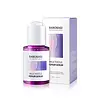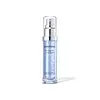What's inside
What's inside
 Key Ingredients
Key Ingredients

 Benefits
Benefits

 Concerns
Concerns

No concerns
 Ingredients Side-by-side
Ingredients Side-by-side

Arctium Lappa Root Extract
Skin ConditioningGlycerin
Humectant1,2-Hexanediol
Skin ConditioningDipropylene Glycol
HumectantButylene Glycol
HumectantDiethoxyethyl Succinate
SolventNiacinamide
SmoothingBetaine
HumectantCentella Asiatica Extract
CleansingMadecassoside
AntioxidantEchium Plantagineum Seed Oil
Skin ConditioningHelianthus Annuus Seed Oil Unsaponifiables
EmollientCardiospermum Halicacabum Flower/Leaf/Vine Extract
Skin ConditioningAcetyl Hexapeptide-8
HumectantCopper Tripeptide-1
Skin ConditioningPanthenol
Skin ConditioningAdenosine
Skin ConditioningEthylhexylglycerin
Skin ConditioningDisodium EDTA
Hydroxyacetophenone
AntioxidantWater
Skin ConditioningXanthan Gum
EmulsifyingCarbomer
Emulsion StabilisingHydrogenated Lecithin
EmulsifyingOctyldodeceth-16
EmulsifyingTromethamine
BufferingOctyldodecanol
EmollientTocopherol
AntioxidantSilybum Marianum Seed Extract
Skin ConditioningArctium Lappa Root Extract, Glycerin, 1,2-Hexanediol, Dipropylene Glycol, Butylene Glycol, Diethoxyethyl Succinate, Niacinamide, Betaine, Centella Asiatica Extract, Madecassoside, Echium Plantagineum Seed Oil, Helianthus Annuus Seed Oil Unsaponifiables, Cardiospermum Halicacabum Flower/Leaf/Vine Extract, Acetyl Hexapeptide-8, Copper Tripeptide-1, Panthenol, Adenosine, Ethylhexylglycerin, Disodium EDTA, Hydroxyacetophenone, Water, Xanthan Gum, Carbomer, Hydrogenated Lecithin, Octyldodeceth-16, Tromethamine, Octyldodecanol, Tocopherol, Silybum Marianum Seed Extract
Water
Skin ConditioningPolydecene
Skin ConditioningButylene Glycol
HumectantDipropylene Glycol
Humectant1,2-Hexanediol
Skin ConditioningAmmonium Acryloyldimethyltaurate/Vp Copolymer
Glycereth-25 PCA Isostearate
EmulsifyingCaprylyl Glycol
EmollientCyamopsis Tetragonoloba Gum
Emulsion StabilisingLeontopodium Alpinum Callus Culture Extract
AntioxidantAgar
MaskingAllantoin
Skin ConditioningDiethoxyethyl Succinate
SolventDisodium EDTA
Adenosine
Skin ConditioningIllicium Verum Fruit Extract
PerfumingT-Butyl Alcohol
PerfumingCaprylic/Capric Triglyceride
MaskingSodium Dna
Skin ConditioningGlycerin
HumectantHydrogenated Lecithin
EmulsifyingSodium Hyaluronate
HumectantXanthan Gum
EmulsifyingLysolecithin
EmulsifyingHydrolyzed Swiftlet Nest Extract
Skin ConditioningSodium Ascorbyl Phosphate
AntioxidantFucus Vesiculosus Extract
EmollientPrunella Vulgaris Extract
AntioxidantEthylhexylglycerin
Skin ConditioningCopper Tripeptide-1
Skin ConditioningDextrin
AbsorbentHydroxypropyl Methylcellulose
Emulsion StabilisingArginine
MaskingCI 77220
Cosmetic ColorantWater, Polydecene, Butylene Glycol, Dipropylene Glycol, 1,2-Hexanediol, Ammonium Acryloyldimethyltaurate/Vp Copolymer, Glycereth-25 PCA Isostearate, Caprylyl Glycol, Cyamopsis Tetragonoloba Gum, Leontopodium Alpinum Callus Culture Extract, Agar, Allantoin, Diethoxyethyl Succinate, Disodium EDTA, Adenosine, Illicium Verum Fruit Extract, T-Butyl Alcohol, Caprylic/Capric Triglyceride, Sodium Dna, Glycerin, Hydrogenated Lecithin, Sodium Hyaluronate, Xanthan Gum, Lysolecithin, Hydrolyzed Swiftlet Nest Extract, Sodium Ascorbyl Phosphate, Fucus Vesiculosus Extract, Prunella Vulgaris Extract, Ethylhexylglycerin, Copper Tripeptide-1, Dextrin, Hydroxypropyl Methylcellulose, Arginine, CI 77220
 Reviews
Reviews

Ingredients Explained
These ingredients are found in both products.
Ingredients higher up in an ingredient list are typically present in a larger amount.
1,2-Hexanediol is a synthetic liquid and another multi-functional powerhouse.
It is a:
- Humectant, drawing moisture into the skin
- Emollient, helping to soften skin
- Solvent, dispersing and stabilizing formulas
- Preservative booster, enhancing the antimicrobial activity of other preservatives
Adenosine is in every living organism. It is one of four components in nucleic acids that helps store our DNA.
Adenosine has many benefits when used. These benefits include hydrating the skin, smoothing skin, and reducing wrinkles. Once applied, adenosine increases collagen production. It also helps with improving firmness and tissue repair.
Studies have found adenosine may also help with wound healing.
In skincare products, Adenosine is usually derived from yeast.
Learn more about AdenosineButylene Glycol (or BG) is used within cosmetic products for a few different reasons:
Overall, Butylene Glycol is a safe and well-rounded ingredient that works well with other ingredients.
Though this ingredient works well with most skin types, some people with sensitive skin may experience a reaction such as allergic rashes, closed comedones, or itchiness.
Learn more about Butylene GlycolCopper Tripeptide-1 (GHK-Cu) is a skin repairing ingredient known for its ability to boost collagen, improve firmness, and support skin regeneration.
It is a complex made up of a naturally occurring peptide (glycine-histidine-lysine) and copper, an essential trace element.
While studying wound healing, researchers noticed GHK-Cu stimulated hair follicle enlargement and growth by keeping hair in its active growth phase longer. This has made it a promising ingredient for hair regrowth treatments.
Some people have reported increased facial hair. While GHK-Cu can make your hair follicles bigger, it usually doesn’t turn soft, barely-visible facial hairs into thick, dark ones.
Anecdotal reports suggest that overusing copper peptides might lead to premature aging due to excess free copper or enzyme imbalances. This claim isn’t backed by large-scale studies.
Unfortunately, there are limited human studies for this ingredient. While early results are promising, many studies are either small, in-vitro, or not rigorously controlled.
For example, there is a 1998 study that explored the effects of copper tripeptide, vitamin C, tretinoin, and melatonin on skin repair and collagen synthesis.
After one month, increased procollagen production was seen in 7 out of 10 participants using copper tripeptide (more than those using vitamin C, melatonin, or tretinoin.
While the study was exploratory, it offers early evidence that copper tripeptide may support collagen production. Larger, well-designed trials are still needed to confirm its potential and understand individual responses.
Read more about other common types of peptides here:
Learn more about Copper Tripeptide-1We don't have a description for Diethoxyethyl Succinate yet.
Dipropylene Glycol is a synthetically created humectant, stabilizer, and solvent.
This ingredient helps:
Dipropylene glycol is technically an alcohol, but it belongs to the glycol family (often considered part of the ‘good’ alcohols). This means it is hydrating and gentle on skin unlike drying solvent alcohols like denatured alcohol.
As a masking agent, Dipropylene Glycol can be used to cover the smell of other ingredients. However, it does not have a scent.
Studies show Dipropylene Glycol is considered safe to use in skincare.
Learn more about Dipropylene GlycolDisodium EDTA plays a role in making products more stable by aiding other preservatives.
It is a chelating agent, meaning it neutralizes metal ions that may be found in a product.
Disodium EDTA is a salt of edetic acid and is found to be safe in cosmetic ingredients.
Learn more about Disodium EDTAEthylhexylglycerin (we can't pronounce this either) is commonly used as a preservative and skin softener. It is derived from glyceryl.
You might see Ethylhexylglycerin often paired with other preservatives such as phenoxyethanol. Ethylhexylglycerin has been found to increase the effectiveness of these other preservatives.
Glycerin is already naturally found in your skin. It helps moisturize and protect your skin.
A study from 2016 found glycerin to be more effective as a humectant than AHAs and hyaluronic acid.
As a humectant, it helps the skin stay hydrated by pulling moisture to your skin. The low molecular weight of glycerin allows it to pull moisture into the deeper layers of your skin.
Hydrated skin improves your skin barrier; Your skin barrier helps protect against irritants and bacteria.
Glycerin has also been found to have antimicrobial and antiviral properties. Due to these properties, glycerin is often used in wound and burn treatments.
In cosmetics, glycerin is usually derived from plants such as soybean or palm. However, it can also be sourced from animals, such as tallow or animal fat.
This ingredient is organic, colorless, odorless, and non-toxic.
Glycerin is the name for this ingredient in American English. British English uses Glycerol/Glycerine.
Learn more about GlycerinHydrogenated Lecithin is created from the hydrogenation of lecithin (a group of phospholipids). Hydrogenation is a chemical reaction between hydrogen and another element.
This ingredient is an emollient and emulsifier. As an emollient, it helps soften skin by trapping moisture within. As an emulsifier, it prevents oil and water ingredients from separating.
Water. It's the most common cosmetic ingredient of all. You'll usually see it at the top of ingredient lists, meaning that it makes up the largest part of the product.
So why is it so popular? Water most often acts as a solvent - this means that it helps dissolve other ingredients into the formulation.
You'll also recognize water as that liquid we all need to stay alive. If you see this, drink a glass of water. Stay hydrated!
Learn more about WaterXanthan gum is used as a stabilizer and thickener within cosmetic products. It helps give products a sticky, thick feeling - preventing them from being too runny.
On the technical side of things, xanthan gum is a polysaccharide - a combination consisting of multiple sugar molecules bonded together.
Xanthan gum is a pretty common and great ingredient. It is a natural, non-toxic, non-irritating ingredient that is also commonly used in food products.
Learn more about Xanthan Gum